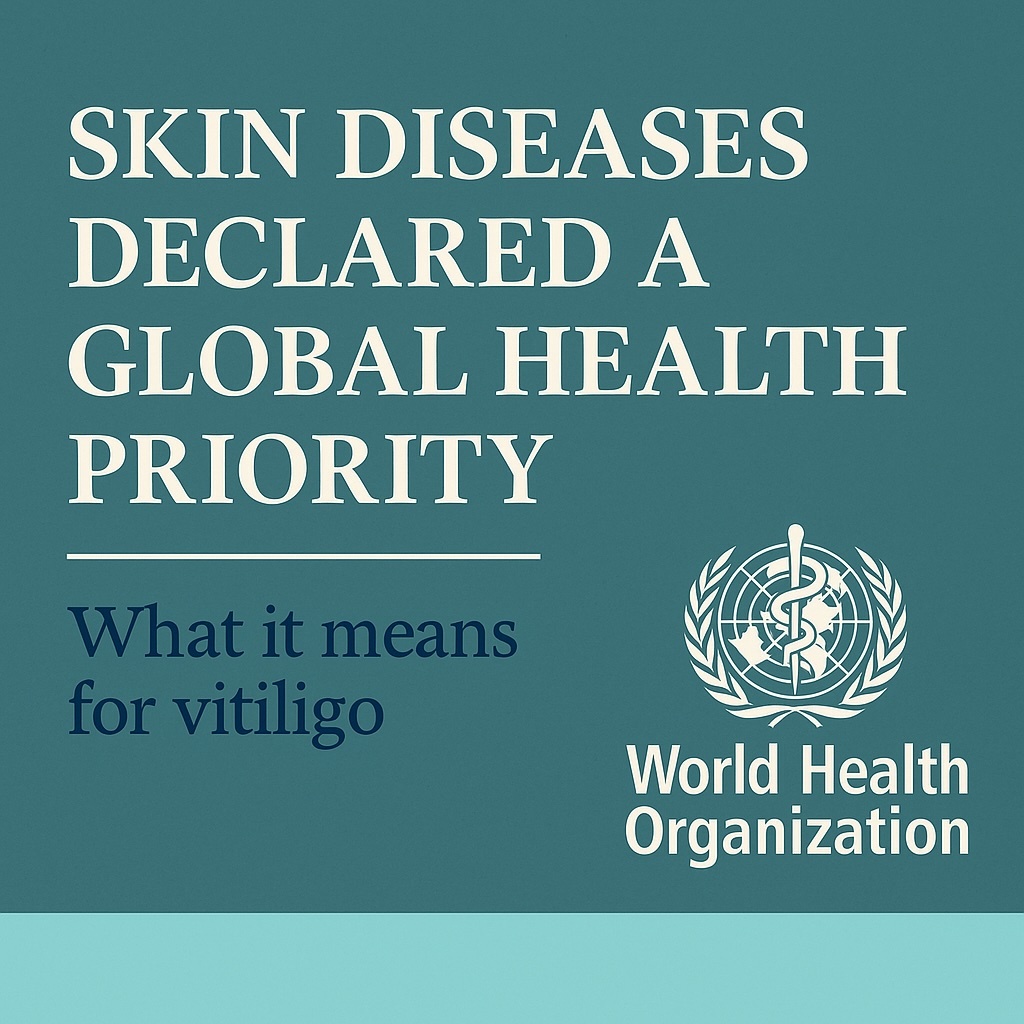New
WHO Declares Skin Diseases a Global Health Priority — What It Means (and Doesn’t) for Vitiligo
On May 24, 2025, the 78th World Health Assembly (WHA78) adopted a resolution EB156(24) that formally declares skin diseases a global public health priority. For the global dermatology community, this is a meaningful milestone — and for those of us focused on vitiligo, it’s a welcome (and long overdue) recognition of the broader challenges we face.
The resolution was proposed by Cote d'Ivoire, and co-sponsored by Micronesia (Federated States of), Nigeria, Togo, China, Egypt and Colombia. It highlights several key points:
- Skin diseases affect over 2 billion people worldwide, making them among the most common human health conditions.
- These conditions are frequently neglected, especially in lower- and middle-income countries, despite being preventable or treatable in many cases.
- There is an urgent need for better access to care, training for healthcare workers, and integration into universal health coverage policies.
- WHO calls for more data collection, research funding, and intersectoral collaboration to tackle the burden of skin diseases.
Our colleagues at VIPOC (Vitiligo International Patient Organizations Committee) have been active in supporting this resolution, and we applaud their efforts. Dr. Freddy Banza represented the vitiligo community in Geneva, holding high-level talks with WHO leadership. Advocacy like this matters — and we’re proud to be part of a global movement raising the profile of skin health.
That said, let’s keep our expectations grounded. WHO has adopted 6 resolutions on different health related matters the same day. Vitiligo is not explicitly named in the resolution “Skin diseases as a global public health priority”, nor are other specific skin conditions (except for psoriasis, Buruli ulcer and Mycetoma). In case you wonder, there are 2,000 to 3,000 well-documented skin conditions, depending on the classification system used and how granular you get.
This is quite typical of EU and UN-style declarations: broad proclamations that sound promising, leave room for generous interpretation, and don’t always come with a clear plan of action. It’s still unclear how national ministries of health will translate this into practical steps or policy reform.
So, what does this mean for vitiligo? It means the door is now open. The world’s top health body has formally acknowledged that skin diseases deserve attention — and vitiligo, while not mentioned by name, is certainly part of that equation. But real progress will depend on how we use this moment: pushing for specific funding, clear guidelines, better data, and meaningful inclusion in public health strategies.
This isn’t the finish line — it’s a chance to move forward with stronger footing. And we intend to do just that.

– Yan Valle
Prof, CEO VR Foundation, Author A No-Nonsense Guide To Vitiligo
Keep digging:
- History Of The World Vitiligo Day
- What's the status with official recognition of World Vitiligo Day?
- 📌 Vitiligo Drug Pipeline Analysis and Market Insights
Podcast:

FAQOther Questions
- Shall I try low-fat diet for my vitiligo?
The link between dietary fat and autoimmune diseases like vitiligo is a compelling yet complex puzzle that continues to intrigue scientists. While the conversation is ongoing, o...
- Who is prone to vitiligo?
Vitiligo can affect anyone, regardless of gender, age, or race. Vitiligo prevalence is between 0.76% and 1.11% of the U.S. population, including around 40% of those with the con...
- Red Wine and Vitiligo
Recent research has revealed intriguing findings about the potential protective effects of red wine against vitiligo, using a genetic approach to study health outcomes. Red Win...
Though it is not always easy to treat vitiligo, there is much to be gained by clearly understanding the diagnosis, the future implications, treatment options and their outcomes.
Many people deal with vitiligo while remaining in the public eye, maintaining a positive outlook, and having a successful career.
Copyright (C) Bodolóczki JúliaBy taking a little time to fill in the anonymous questionnaire, you can help researchers better understand and fight vitiligo.
